Five Tips to Keep Your Minnesota Trees Resilient in Minnesota’s Shifting Climate
Unlike trees in a forest, urban trees deal with a lot of stressors that compromise their health–starting with competition from turf grass for water and resources. Additionally, they often have limited growing areas, and their soil is typically compacted from repeated use patterns or construction. Lastly, the soil is often sub-optimal for growth as it lacks the organic matter and other nutrients naturally found in a forest setting. All of these factors can lead to a less resilient tree.
The overall health of our urban and suburban trees is already being impacted by the stressors they have to face just from growing where we’ve planted them. When environmental factors like drought, flooding, heat, extreme cold, insect pests, diseases, or climate change are added, community trees experience more stress. Learn more about the growing trend of landscape resiliency and get tips on how to improve the resilience of a tree growing in challenging conditions.
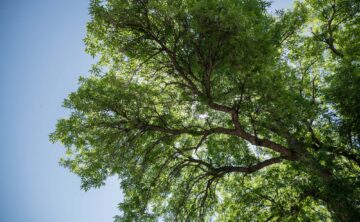
What is landscape resiliency?
Why do I want more resilient trees?
Resilient trees are capable of adapting to a wide range of environmental conditions. They can tolerate variations in temperature, rainfall, soil types, and other factors specific to their native or introduced habitats. Trees that can adjust and thrive in different conditions are generally more resilient. It’s important to note that the resilience of trees can vary depending on the specific environmental conditions and the region where they are planted.
Five tips to improve the resilience of your trees:
1. Ensure your tree gets enough water.
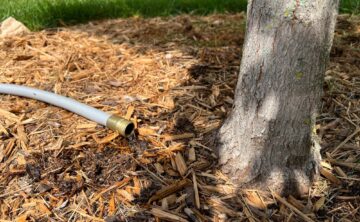
Watering is one of the most important and underutilized tools to maintain (and improve) tree health, but a lot of people are unfamiliar with how to water a mature tree. While sprinklers maintain turf grass, your trees are likely getting little benefit from an irrigation system. To properly water a tree, we recommend a soaker hose or leaving your hose on a trickle and letting it slowly percolate through the soil near the base of the tree. Read more about proper tree watering here.
We experienced drought conditions in 2021 & 2022 in the Twin Cities Metro, and 2023 is shaping up to be another dry summer, leaving many trees with drought stress. Watering is essential for tree health and is one of the most important things you can do to maintain a healthy tree during times of drought.
On average, a good rule of thumb is 10 gallons of water per inch of diameter (measured at 4.5 feet above the ground) per week if we’re not getting consistent rain. A 20-inch diameter tree would need 200 gallons of water a week!
2. Add mulch around the base of your tree.
Mulching is a way around several stressors common to our suburban and urban trees. Studies have shown that trees can grow up to five times more fine roots under mulch than they would under turf grass, which helps them find and uptake water and nutrients in the soil more efficiently.
- Every year we take away a sizable input of organic matter when we rake up and remove leaves. Mulch helps counter that by providing organic matter to the soil bank as it decomposes.
- Mulch reduces the competition for water from turf grass and cools the soil temperature to encourage more water and nutrients. Mulch also reduces the amount of water loss to evaporation from heat under coverings like rocks around the base of your tree.
- Mulch also acts as a physical barrier to keep lawn mowers and weed whips away from the base of your tree. Additionally, you can use it to cover up those problematic surface roots you consistently hit with your mower!
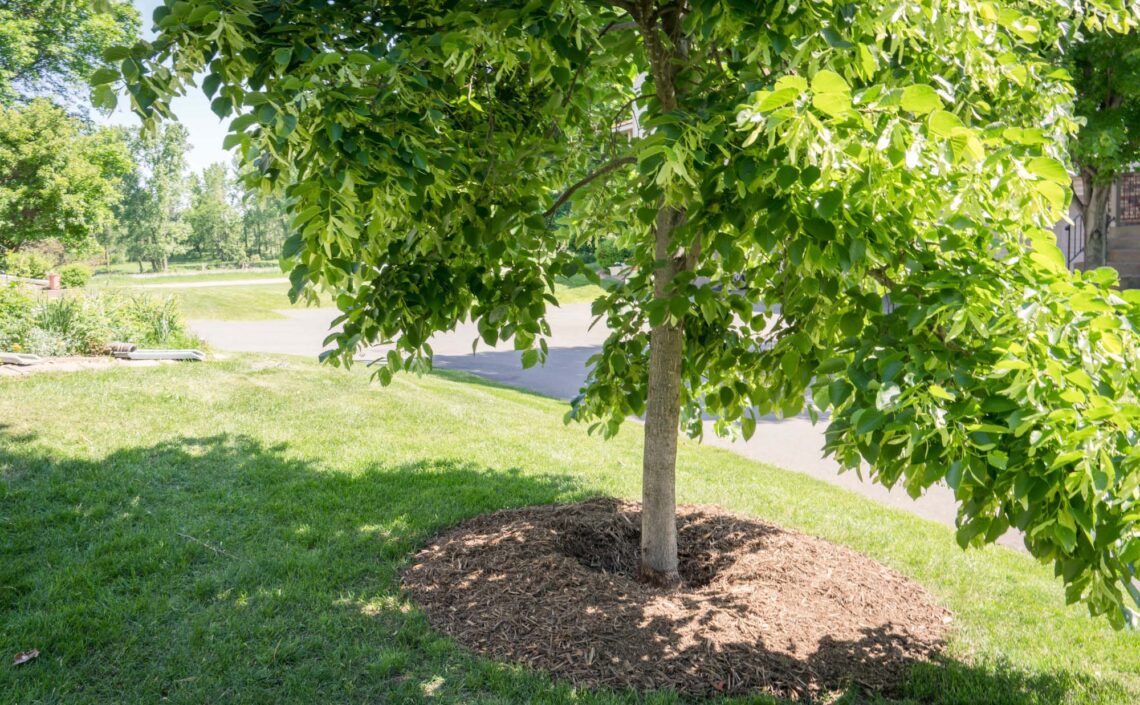
3. Ensure your tree is getting the proper nutrition.
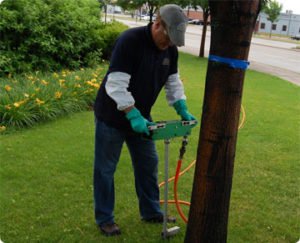
Many homeowners have lawn maintenance programs that include regular fertilization of their turf grass. Since trees are big plants, it should come as no surprise supporting them with regular fertilizing will help keep them healthier and happier!
Rainbow Treecare offers custom blended fertilizer mixtures of macro and micro-nutrients based on the results of all of the soil tests we’ve done in the Twin Cities metro. One of our ISA Certified Arborists can determine which of our formulas would improve the conditions your tree is facing. Fertilizer is a proactive step in any tree health management plan. Fertilization can help increase a tree’s landscape resiliency by making sure it has the nutrients available to create all of the secondary things they make in addition to the carbohydrates they make to feed themselves–including defense compounds to protect against pests and diseases.
4. Maintain structural integrity.
Trees with strong branches, trunk, and canopy structure are more likely to withstand storms, heavy snow loads, or other physical stressors. Proper pruning and regular maintenance can help develop a sound structure that minimizes the risk of branch failure and tree damage.
5. Deep and healthy root systems.
A well-developed and healthy root system is crucial for tree resilience. Deep roots allow trees to access water and nutrients from deeper soil layers, making them more drought-tolerant. Additionally, strong root systems provide stability, helping trees withstand strong winds and prevent toppling.
Unfortunately, urban tree roots often lack enough space or are trying to grow through heavily compacted soils. Some trees (like maples) also tend to grow their roots in circular patterns. When planted with restricted or compacted root zones, the roots will only grow near the base of the tree. This can lead to ‘girdling roots’, which choke the tree as they wrap around the stem and get larger.
Rainbow Treecare can help improve the health of your tree’s roots with our Root Enhancement System, designed to help recreate the optimal conditions trees would experience growing in a forest.
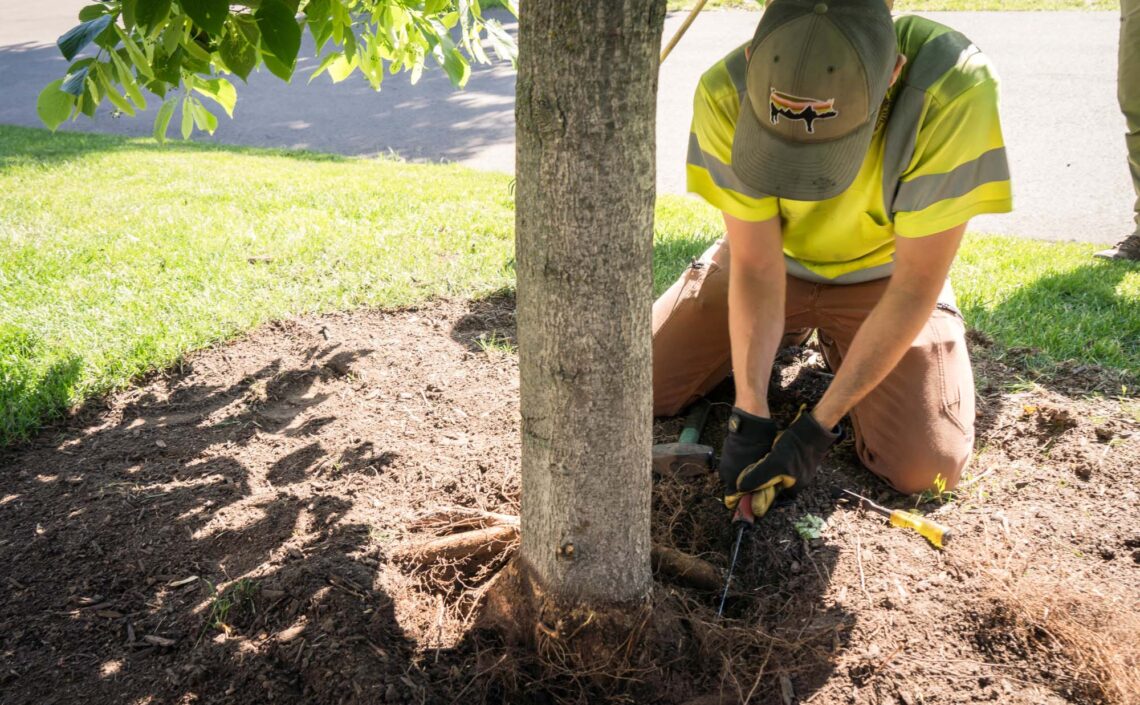
Not sure how to get started on tree resilience?
Consulting with one of our ISA Certified Arborists can provide valuable guidance on selecting the most resilient tree species for Minnesota, or improving the resilience of your current trees through a tree health assessment.
Other items you may be interested in:
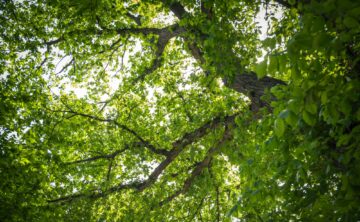
Fertilization
Tree and Fertilization Services in Minnesota The health of your trees depends on the health of your soil. When trees grow in a forest, decomposing

Do I Need to Water My Trees & Shrubs in Minnesota?
The answer depends on the age of the tree or shrub. Newly planted trees and shrubs need regular watering for approximately two years to help
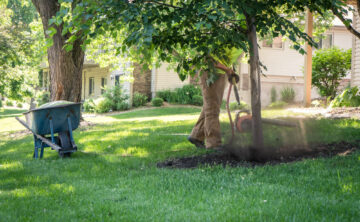
Root Care Service
Tree Root Care & Enhancement Services in Minnesota Urban living is tough on trees in the Minneapolis and St. Paul area. Cramped growing spaces, compacted



